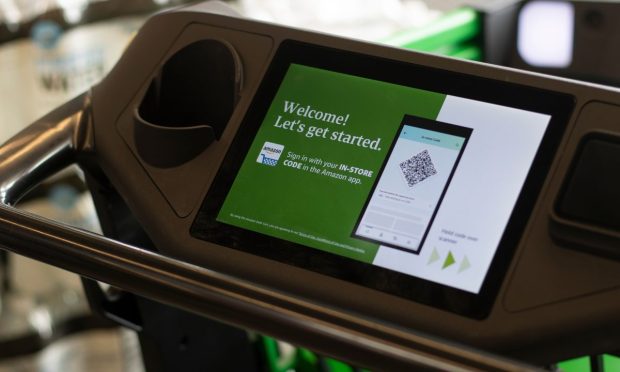Amazon Updates Dash Carts as Self-Service Gets a Facelift

At the start of the pandemic, grocers could stay ahead of consumers’ self-service expectations by having a self-checkout kiosk. Today, however, the emergence of new technologies and the popularization of checkout methods that used to be on the fringe have upped the ante. Now, grocers need not only to put control of the shopping journey in the hands of consumers but also to make the experience as frictionless as possible.
On Monday (July 11), Amazon announced an update to its Dash Cart smart shopping carts that includes doubling the carts’ capacity and allowing for parking lot unloading. The new cart will soon go live at the Whole Foods Market store in Westford, Massachusetts, with “a few additional” Whole Foods locations and “many” Amazon Fresh stores across the country to follow.
Related news: Amazon Dash Cart Lets Grocery Shoppers Skip Checkout
In addition to other hardware changes to the technology, the new cart includes images of fresh produce and other products on the display screen and more accurate geo-locating features to show information and promotional offers related to nearby items.
“As many of our customers return to their in-store grocery shopping routines, it’s exciting to introduce new and unique ways for them to shop our stores,” Leandro Balbinot, chief technology officer for Whole Foods Market, said in a statement. “We’re thrilled that the newest version of Dash Cart will debut in our Westford store and can’t wait to hear the feedback from our customers there.”
Smart carts can unlock various helpful data points for grocers about how consumers move through stores and interact with items. In fact, Amazon is already monetizing these insights. In late June, the company announced the launch of its new Store Analytics service, selling data to brands from its Just Walk Out frictionless checkout and its Dash Carts about “how their products are discovered, considered and purchased.”
“This is what the next generation of the in-store journey should look like,” Raz Golan, CEO and co-founder of grocery store technology developer Shopic, told PYMNTS of the company’s smart cart devices in an interview last year. “All these data points are ones that we just couldn’t measure very well until today, and it opens a whole new world of data analytics.”
Related news: Smart Carts Bring Data Analytics Into Grocery Aisles
A range of leading grocers is trying out smart cart technology. In May, Albertsons Companies announced the expansion of its partnership with smart shopping cart creator Veeve to “a few dozen stores” across the United States, and Kroger has been testing out “KroGo” smart carts, created in partnership with Instacart-owned technology company Caper AI, since the start of last year.
Additionally, grocers and convenience stores worldwide have been testing out computer vision-powered frictionless checkout in the style of Amazon’s Just Walk Out, whereby consumers take items off the shelves and walk out of the store, having the items automatically charged to their accounts.
PYMNTS research from the 2021 study “Today’s Self-Service Shopping Journey: The New Retail Expectation,” created in collaboration with Toshiba, found that a third of grocery customers used self-checkout options for their most recent in-store purchases. Additionally, the report, for which PYMNTS surveyed over 2,000 U.S. consumers about their shopping behavior, also noted that two-thirds of these grocery shoppers opted for self-checkout because it was faster than checking out with a cashier. Half said they chose the option because there was no line for self-checkout.
See also: Consumers Want Self-Service Checkout Options, But Rarely Get to Use Them
